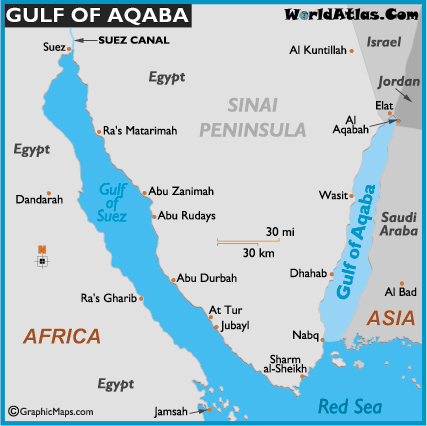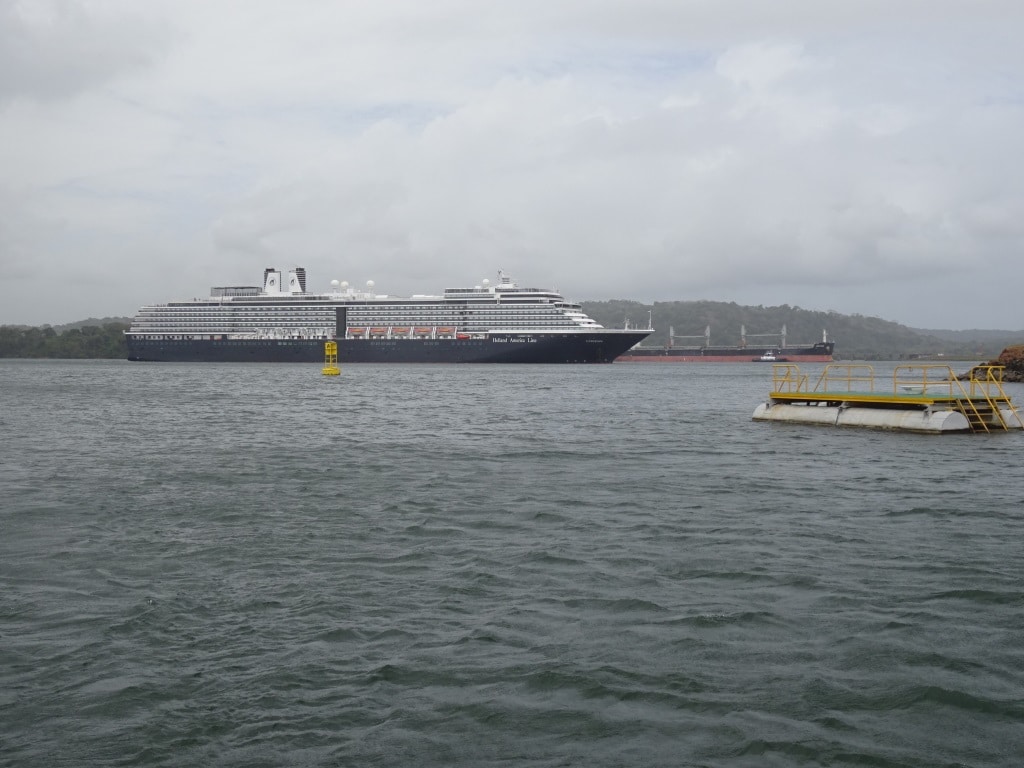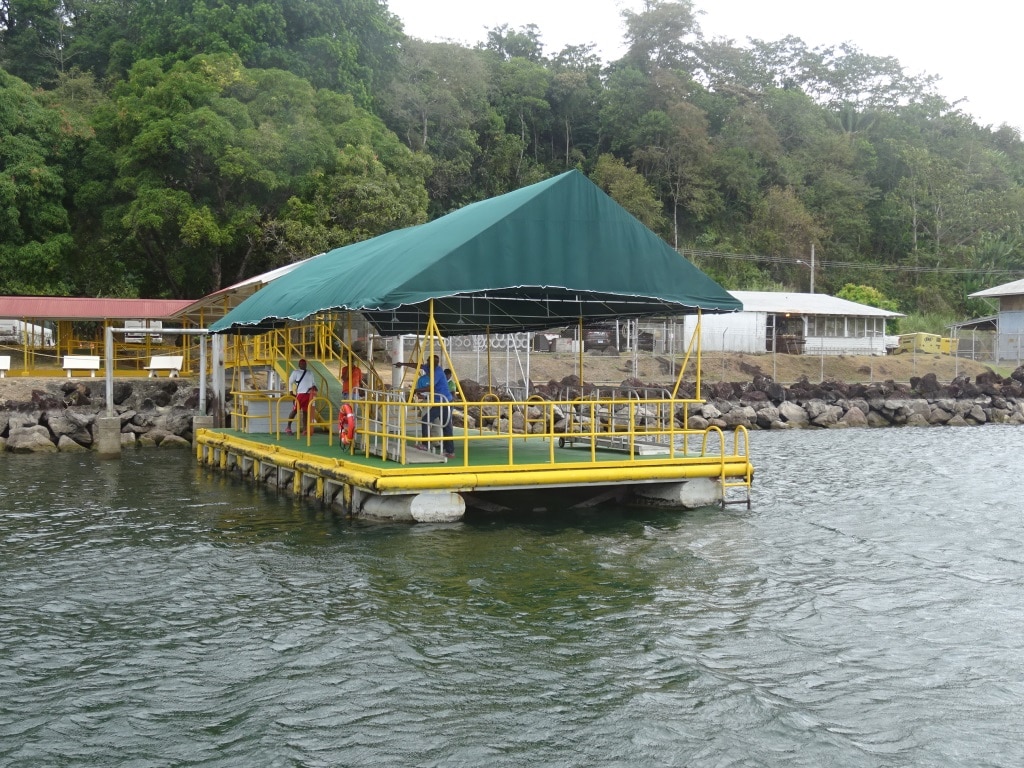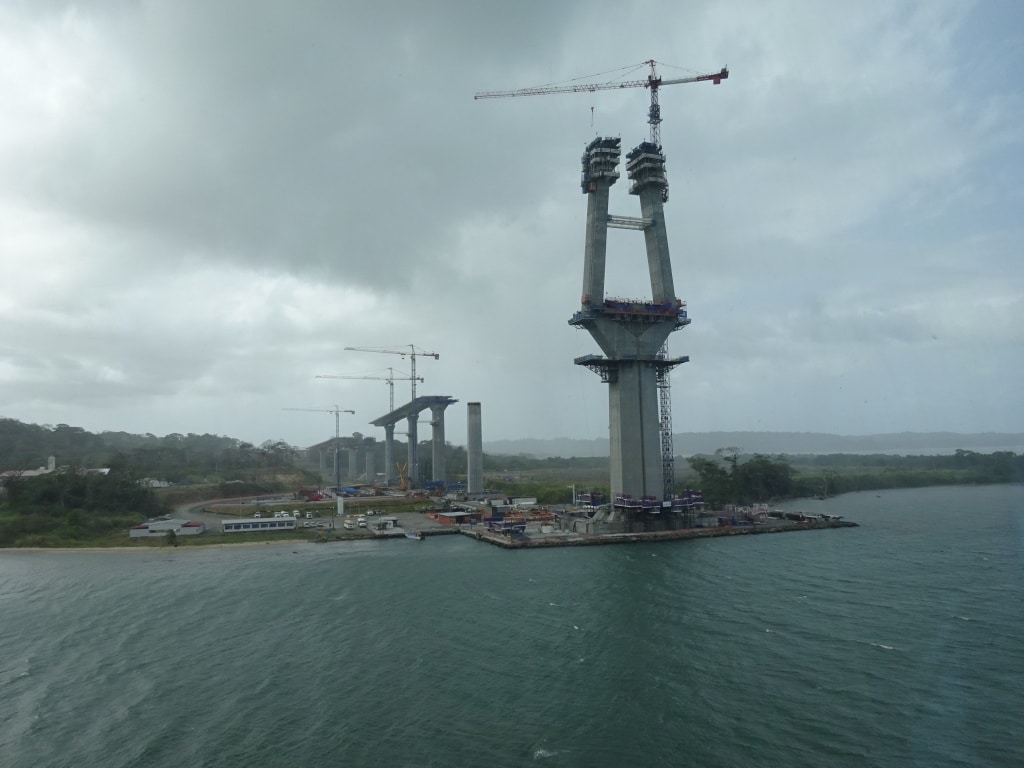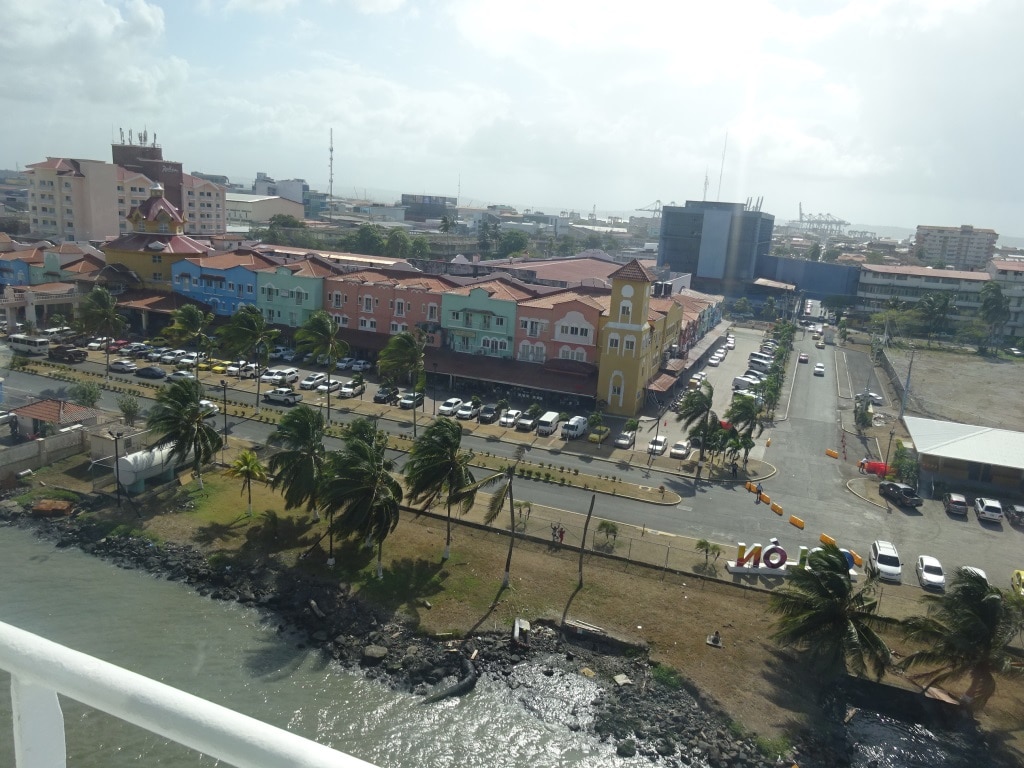Sailing into Santo Tomas means sailing through a long and narrow channel. Therefore we were all very happy that the predicted wind had disappeared. Thank you Otto for destabilizing the original weather planning. Always nice to have a Tropical Storm as your friend and not as your enemy. The entrance channel is nearly 6 miles long and dredged out of a very shallow inland lake or Laguna. Because it is a very sheltered place, there is a lot of shipping around. Either in layup, or anchor waiting or fishing or docked in the two ports here. Apart from Santo Tomas there is also the smaller port of Puerto Barrios which has a finger pier leading from the town of Barrios to the channel which ends at Santo Tomas. Barrios is specializing in the Banana trade and as Guatemala has an awful lot of Bananas there is always a ship alongside and sometimes also one or two waiting at the anchorage. Chiquita Bananas are mostly coming from Costa Rica, the bananas trading under the name Sole come from here, from Barrios.
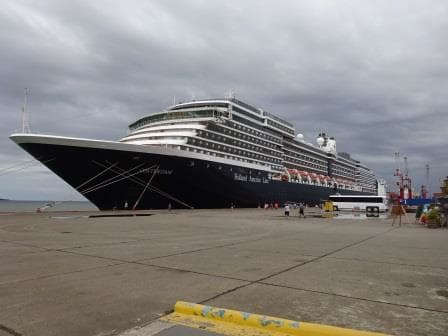
The ms Oosterdam, nbr. 3 of the Vista Class. Docked at Santo Tomas.
The Oosterdam happily sailed by and docked at the Commercial berth nbr.1 of Santo Tomas. This is the designated cruise ship berth but is also used as a cargo berth. Behind us at the same pier is the container berth but if there are two cruise ships scheduled then they kick the container ship(s) or bulk carriers or tankers off the berth and a 2nd cruise ship can go alongside. That does not make the cargo ships captains very happy but it is all about making money and cruise guests bring in more money than containers.
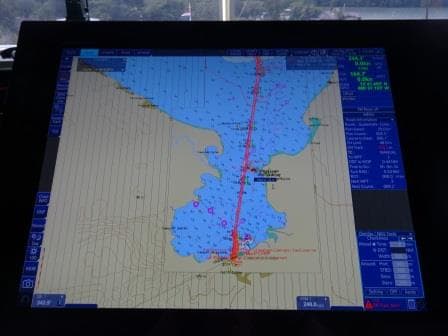
It is a long way in and thus we had the pilot on board at 05.45 in the morning for a 07.00 docking.
Santo Tomas is really a port for taking tours. The longest tour is a fly tour to the Mayan ruins of the city of Tikal. That tours leaves on arrival and comes back when the ship leaves. (Quite often the ship leaves just after the tour has come back) There is also a Mayan ruin closer by, Quirigua, which you can do in one morning. Then there are the Eco Tours and the beach visits.
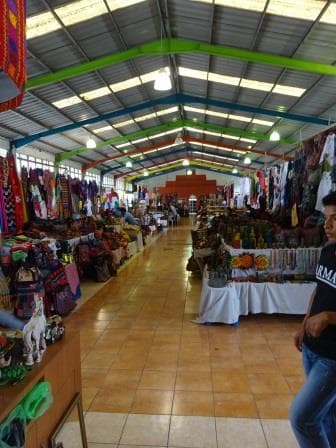
The local indoor souvenir market (and some art as well) In the centre a sitting area with a cafe, telephone and internet, and a stage with a Marimba band.
For those who stay on board (this cruise we have a lot of guests on board who have already been there and bought the T shirt) there is an extensive souvenir market in the port building where you can still buy a T shirt in case you forgot it last time. (And a lot of other things as well) I was almost tempted to buy a Mayan skull with two lights in it in the shape of red hearts. But I value my marriage and I know that my wife would not be amused if I brought that one home. I did try the local beer called Brahva and I was a little bit disappointed. A lot of Belgians lived here in the 19th. Century and you would think that they would have at least taught the locals how to brew a decent beer. But some of our guests where drinking it so maybe it was my personal taste. There was a full size Marimba band present in the terminal and thus you could enjoy some local culture without leaving the port.
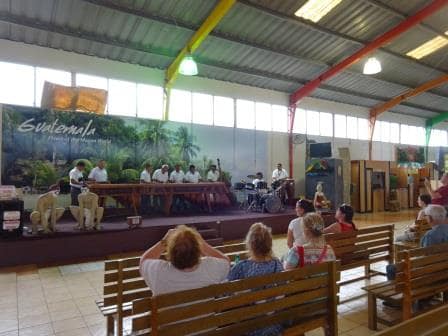
The Marimba band. They played without amplifiers so it was very pleasant to listen to.
There is only one way in and thus also only one way out and at 17.00 hrs. the Oosterdam will thus sail through the channel again to open waters and then north to Costa Maya. Tomorrow we will have a short call there from 08.00 to 14.30 in the afternoon. Longer is not possible otherwise we might arrive late in Tampa. Costa Maya is a purpose built resort in the middle of nowhere (although there is a small village about 20 minute’s walk outside the gate). Normally a six hour visit is long enough for a Beach call and through all the years I have been going there I have never heard guests complaining about the stay being too short. Most of them were just ready to step back on board after a lot sea salt and sand. The pier can take three ships and we will be there with one other ship. Contrary to Santo Tomas this port is fully exposed to the Caribbean Sea and thus we depend on nice weather. At least not too much wind, otherwise we cannot dock and not too much swell, otherwise the ropes break and we cannot remain alongside the dock.
For tomorrow things look quite good, not too much wind, and thus not too much swell, but warm 28oC / 82oF and a fair chance of a shower.
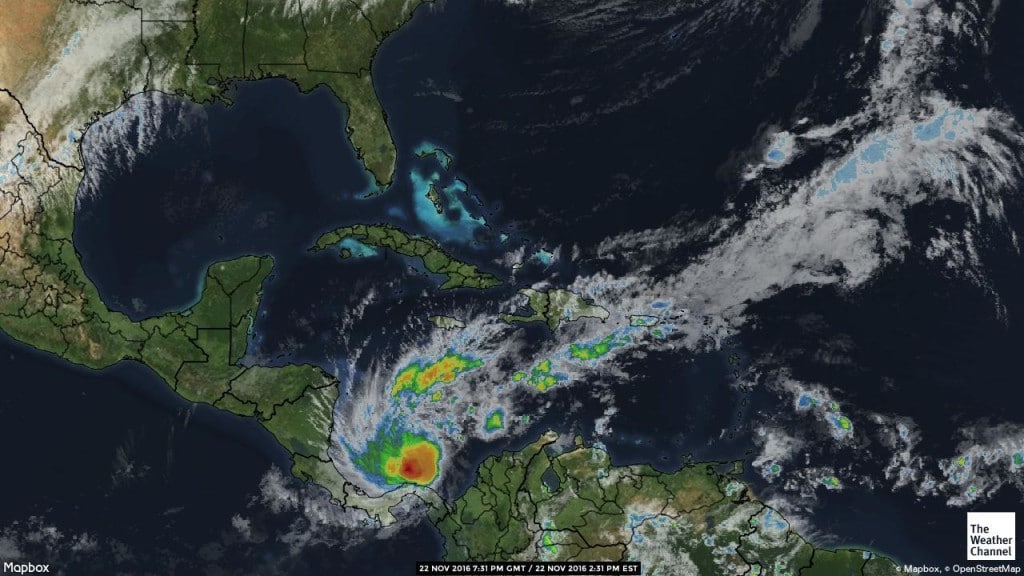
Otto now looks like a tropical storm /hurricane although still a small one. Thus not much of a deep eye and not a defined swirling -isolated- cloud around it.
Otto still seems to like it in his little corner of Panama but he is gathering strength all the time and the weather guru’s expect he will start moving eventually. Not in our direction and so all is well in the little world of the Oosterdam.
According to our friends from the hurricane Centre:
As of early Tuesday morning, Tropical Storm Otto’s maximum-sustained winds have increased to 70 mph, only 5 mph short of Category 1 hurricane intensity. Otto remains nearly stationary and is not expected to move much through Tuesday afternoon. Tropical storm-force winds extend outward up to 35 miles away from the center of the storm.
Otto remains within an environment of warm water and decreasing vertical wind shear. This should allow Otto to intensify further and Otto could become a hurricane before making landfall over southeast Nicaragua on Thursday. Though the system is nearly stationary at this time, it will start to slowly drift westward over the next few days as high pressure builds over the eastern Gulf of Mexico and Florida. This will create an easterly steering flow that will take the storm westward.
